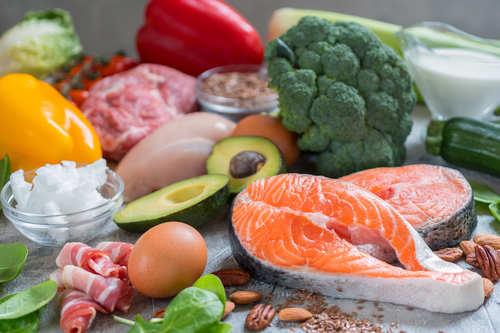 Make America Healthy Again – The United States is facing an unprecedented health crisis that threatens the well-being of millions of Americans. Over the past five decades, the nation has witnessed a dramatic rise in chronic diseases.
Make America Healthy Again – The United States is facing an unprecedented health crisis that threatens the well-being of millions of Americans. Over the past five decades, the nation has witnessed a dramatic rise in chronic diseases.
The Alarming Rise of Chronic Diseases
Since the 1970s, obesity rates have skyrocketed from approximately 13% to over 42% in 2020. Diabetes prevalence has increased by nearly 300%, with over 37 million Americans now living with the condition. Heart disease remains the leading cause of death, claiming nearly 700,000 lives annually, while chronic conditions now account for 90% of the nation’s $4.1 trillion annual healthcare expenditures.
Chronic diseases cost the US healthcare system over $3.7 trillion each year, with indirect costs from lost productivity pushing the total impact even higher. What was once considered a healthcare issue has become a national economic crisis, directly linked to nutritional habits and lifestyle choices.
The Food as Medicine Viewpoint
The idea of using nutrition as your medicine comes from Hippocrates. Hippocrates said “Let food be your medicine, let medicine be your Food”
Nutrition is the most critical factor in addressing this mounting public health challenge. The connection between diet and health has never been more apparent. Food as medicine offers a promising path to nationwide health transformation.
A promising emerging trend could fundamentally reshape Americans’ approach to health and nutrition. When one recognizes food not just as sustenance, but also as a powerful medical intervention.
Healthcare providers are increasingly prescribing specific dietary plans and using nutritional education and counseling into treatment protocols.
This approach goes beyond traditional dietary advice to viewing nutrition as a strategy for preventing, managing, and potentially reversing chronic conditions.
The Education Gap
One of the most significant challenges in addressing America’s health crisis is the widespread lack of nutritional education. Most medical schools and holistic programs provide minimal nutritional training, with the average physician, chiropractor, or holistic doctor receiving less than 25 hours of nutritional education during their entire training program. This knowledge gap extends to the general public, where nutritional literacy remains remarkably low.
Most Americans struggle to understand basic nutritional principles, misunderstand food labels, and lack the skills to make informed dietary choices. This educational deficit contributes directly to poor health outcomes, creating a cycle of chronic disease that perpetuates itself through generations.
A Path Forward
Transforming America’s health requires a multifaceted approach centered on nutrition, such as:
Comprehensive nutrition education in schools and medical training programs
Improved access to nutritious, affordable food
Healthcare policies that prioritize preventative nutritional interventions
Public health campaigns that educate people about nutrition and empowers individuals
The potential impact is profound. Studies suggest that up to 80 percent of chronic diseases could be prevented through improved nutrition, lifestyle modifications, and early intervention. By investing in nutritional education and promoting a food-as-medicine approach, the United States can dramatically reduce healthcare costs, improve quality of life, and create a healthier future for millions of Americans.
The end to America’s health crisis is not found in complex medical treatments, but in the simple, powerful choice of what we put on our plates every day.
Nutrition is not just fuel—it is medicine, prevention, and the key to reclaiming your health.
The Eat Well, Feel Great! Nutrition Program
The Eat Well, Feel Great! Nutrition Program will show you how easy it is to feed yourself and your family to create and maintain good health. The program separates fact from fiction and provides basic, true nutrition concepts so you can achieve the level of health you want. The information in this program is easy to understand, rooted in natural health care and based on the science of the body.
Click here for more information about the Eat Well, Feel Great! Nutrition Program
See MCVitamins – Educate Yourself and Take Control of Your Health
 Recently, there are quite a few ads praising the weight loss gotten from injecting a drug into your stomach. It is referred to as Pharmaceutical Weight Loss.
Recently, there are quite a few ads praising the weight loss gotten from injecting a drug into your stomach. It is referred to as Pharmaceutical Weight Loss.
 Make America Healthy Again – The United States is facing an unprecedented health crisis that threatens the well-being of millions of Americans. Over the past five decades, the nation has witnessed a dramatic rise in chronic diseases.
Make America Healthy Again – The United States is facing an unprecedented health crisis that threatens the well-being of millions of Americans. Over the past five decades, the nation has witnessed a dramatic rise in chronic diseases. (fat, carbs and protein) content. They provide phytonutrients, fiber, and antioxidants which contribute to overall health.
(fat, carbs and protein) content. They provide phytonutrients, fiber, and antioxidants which contribute to overall health.